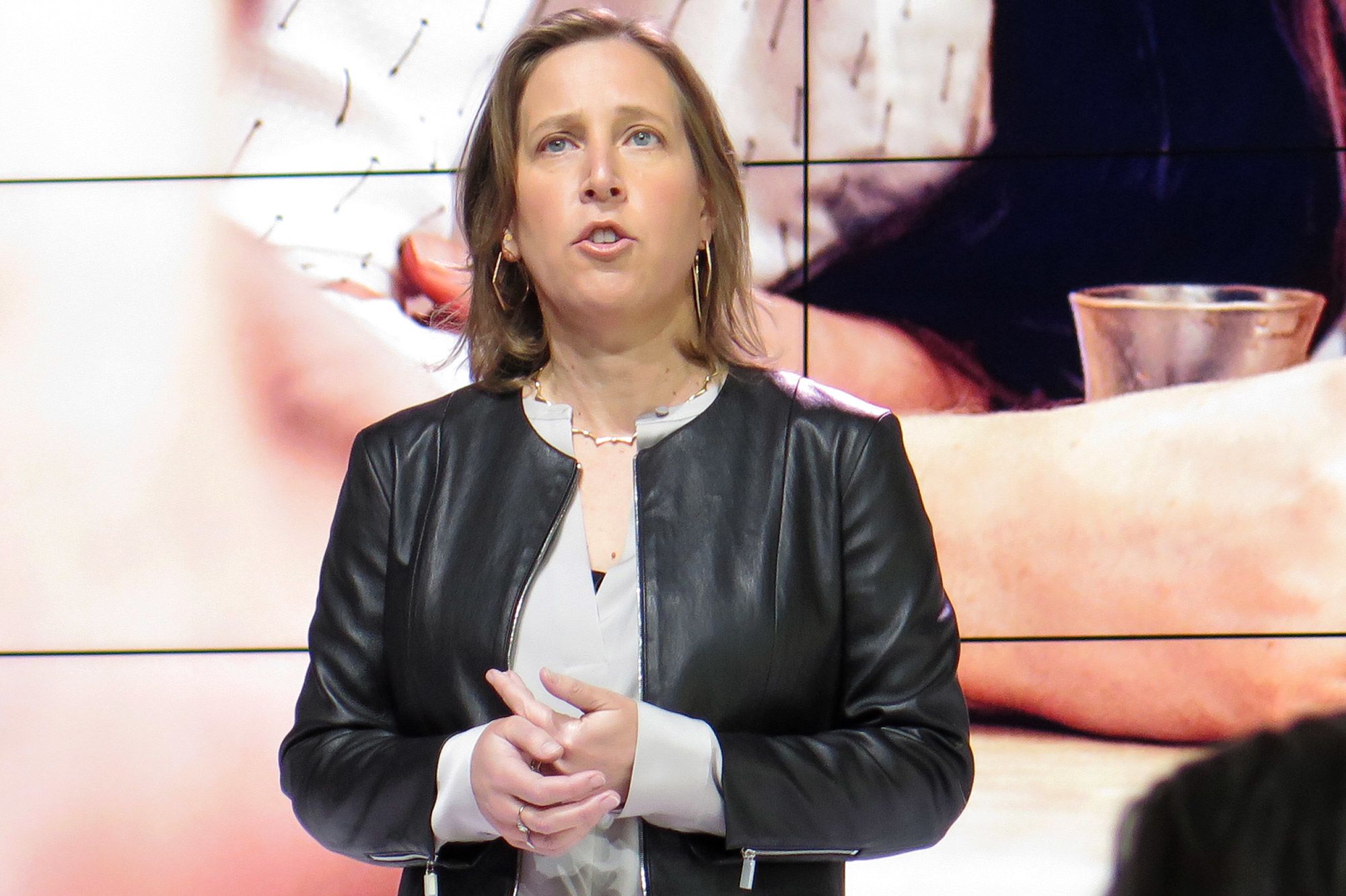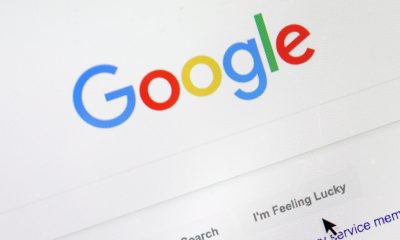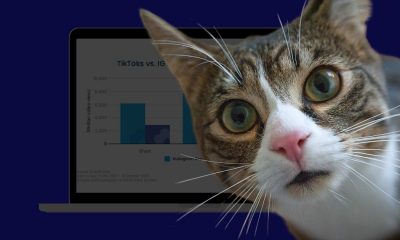SOCIAL MEDIA NEWS
YouTube faces existential threat from the EU’s new copyright directive
[ad_1]
Susan Wojcicki, CEO of YouTube.
Michael Newberg | CNBC
Samuel Jones largely lives off the money he makes from YouTube as a TV and film reviewer.
“In terms of paying rent, buying food, buying cigarettes, it’s all YouTube money,” he said.
While his channel’s co-creator Max Bardsley is in university, Jones works on “NitPix ” full-time. The U.K.-based pair also nurture a small fashion business on the side that mostly provides some spending change.
Recently, Jones and Bardsley have been thinking about a backup plan. Like other content creators who have built brands and businesses on tech platforms like YouTube, they fear their livelihood and creative outlet could be threatened by a new copyright directive passed by the European Union in March.
Under the new rules, which member states have two years to formally write into law, tech platforms like YouTube could be held liable for hosting copyrighted content without the proper rights and licensing. That’s a big change from the status quo, which generally assumes platforms are not legally liable for their users’ uploads so long as they take down infringing content once flagged. But according to the directive, companies like YouTube can soon be held liable unless they can also prove they made “best efforts” to get authorization for the content and prevent it from being shared without rights in the first place.
YouTube and other tech platforms have argued that the only practical way to avoid liability will be to install even more restrictive content filters than the ones they currently have to prevent infringement. The EU directive does not require tech companies to do that and it makes exceptions for using copyrighted material in parody or commentary, as would be the case in Jones and Bardsley’s reviews.
But experts say it will be difficult for platforms to create automated filters that can distinguish this context, at least at first. That could mean a channel like “NitPix” would have to avoid using any movie or TV clips in their reviews to ensure their videos upload to the site in a timely manner.
Jones and Bardsely, along with four other YouTube creators interviewed for this article, remain optimistic that the final version of the laws will be more flexible than the vague language of the directive. But YouTube isn’t leaving things up to chance.
A threat to YouTube
YouTube is ready to put up a fight against the EU measure, which threatens to force it to block a wide swath of content and slow down the process of uploading videos to the site to avoid liability. If YouTube chose to block copyrighted content with stricter upload filters, everything from a family video of a couple’s first wedding dance to a potentially viral dance challenge video like a “Harlem Shake ” flash mob could be blocked from the site. Frustrated creators and users may flee the platform if it no longer provides the outlet for their creativity or boredom.
If creators take their work elsewhere, that would mean fewer videos to watch on YouTube and fewer chances for YouTube to generate ad revenue. The company is already under pressure to grow ad revenue after changes to its algorithms over the past year have likely hurt engagement in favor of winning back scorned advertisers worried about their brands appearing next to unseemly videos.
Alphabet CFO Ruth Porat blamed YouTube in part for the company’s decelerating ad revenue growth in its first quarter 2019, which sent Google’s stock plunging more than 7% following the report.
“While YouTube clicks continue to grow at a substantial pace in the first quarter, the rate of YouTube click growth rate decelerated versus a strong Q1 last year, reflecting changes that we made in early 2018, which we believe are overall additive to the user and advertiser experience,” Porat said on a call with analysts after the report.
YouTube recognizes the importance of keeping its creators happy on the platform. In an April 30 blog post, CEO Susan Wojcicki said YouTube will aim to further promote a wider array of creator videos in its trending tab to answer concerns that the same creators seemed to be featured all the time.
Wojcicki also said YouTube is working on improving its “Manual Claiming” tool so that YouTubers aren’t unfairly penalized for copyright claims stemming from extremely short or incidental content usage. But under the new directive, YouTube would likely have to rethink this claiming process.
“The incentive structure here for YouTube would be to delete everything where it has its doubts about its illegality,” said Stephan Dreyer, a senior researcher of media law and media governance at the Hans-Bredow-Institut in Germany. “In cases of doubt, the machine must always decide against the content creator and that’s something that paragraph 7 does not really cope with,” he added, alluding to the section that allows for commentary and parody exceptions.
In its final iteration, the directive makes specific exceptions for content that is used for criticism, quotation or parody, which legal experts said should wipe away fears of what critics labeled a “meme ban. ” Opponents of the directive originally argued the measure would prevent the spread of memes since copyrighted images that make up the basis of many of these satirical posts could end up filtered off of platforms. But even after the text was revised, tens of thousands of protesters took to the streets in Germany the week of the EU parliamentary vote, pledging to “save your internet.”
YouTube did not make a representative available for an interview for this article, but it has said on its site that revisions made to the directive before its passage were an “improvement.” But the company still remains wary of how it will be implemented.
“While we support the rights of copyright holders — YouTube has deals with almost all the music companies and TV broadcasters today — we are concerned about the vague, untested requirements of the new directive,” Wojcicki wrote in the blog post. “It could create serious limitations for what YouTube creators can upload. This risks lowering the revenue to traditional media and music companies from YouTube and potentially devastating the many European creators who have built their businesses on YouTube.”
Creators’ frustrations
YouTube creators often use copyrighted material as a way to highlight a point or comment on a specific piece of media. In many of these cases, this use is allowed under the principles of “fair use,” similar to the exceptions made in the EU’s final version of the directive.
In interviews, YouTube creators said these materials aren’t just an added plus for their videos — they’re a core part of what makes them work.
“I don’t want to have to spend half the video or three-quarters of the video just explaining things that I could show instead, and I think that when you do that, it kind of detracts from the video’s appeal,” said James Dancey, whose political commentary-focused channel “The Right Opinion ” has over 300,000 subscribers. “We have an audience that I feel like is waiting on us to deliver quality content, and one of the things I’ve realized as a YouTuber is there are many people who find my videos make a difference to their day.”
Arun Maini, who runs the technology review channel “Mrwhosetheboss ” with over 2 million subscribers, said he intersperses relevant copyrighted material in about half of his videos as a way to keep viewers engaged. He dreads the thought of producing a six-minute video of simply talking to the camera. Beyond being boring, he thinks this sort of video could actually hurt a creator’s following.
“If anything, you’d be better off not even trying because you’d be making such bad content that you’d be damaging your channel,” Maini said.
Overall, creators are optimistic the directive won’t excessively impact their channels, if only because they believe the new laws won’t work. But they do anticipate headaches from YouTube’s own filtering system, whose current iteration known as Content ID, is already a thorn many creators’ sides.
“Content ID is the only real existing model we have to work on to see what the filters would be like, and it’s been an absolute nightmare for me working under Content ID” said Dan Bull, a YouTube creator with over 1.5 million subscribers on his channel.
Bull, who creates rap videos about the internet, gaming and politics, said he’s had videos flagged by the filter because it could not detect that he had a nonexclusive license. He said he’s also learned of instances where the system incorrectly redirects revenue after someone makes a false copyright claim.
YouTube did not answer CNBC’s questions about Content ID or its characterizations by creators.
Bull said his problems with Content ID have already changed his creative process. He’s reluctant to create videos with fair use content because it’s become so burdensome to deal with.
“I don’t really want to make parody music anymore. I used to really enjoy making parody songs, but now when I think about that, I think about what a headache it would be with the copyright claims,” Bull said. “It seems to be contrary to the entire principle of what copyright was for.”
The “NitPix” creators said they temporarily had one of their TV reviews removed from the platform due to copyright, but it was later reinstated. They said they haven’t had problems with it in more than a year.
Given the technical limitations that already exist, legal experts say the complexity of such a system will advantage the already-dominant players.
Corynne McSherry, legal director of the Electronic Frontier Foundation, which has fiercely opposed the EU directive, said building this type of system is a task that “even the YouTubes of the world will not be able to accomplish,” leaving open the question of how up-and-coming platforms will tackle it.
Entrenching large platforms
A key criticism of Article 17 of the EU directive has been that it will further entrench large platforms’ foothold in digital distribution dominance. The directive gives more leniency to companies with under 10 million euros in annual revenue with a product available to the public for less than three years. But legal experts say that in trying to get tech companies to pay their fair share for copyrighted content, the directive has created a new problem that only the tech giants can solve.
“A likely effect of [Article 17] will be to entrench the exact tech giants that everyone’s been complaining about all this time,” McSherry said.
Legal experts interviewed for this article said platforms will likely pursue broad licensing agreements to avoid liability. YouTube already has agreements with record labels that give it certain rights to use its artists’ music in exchange for royalty payments. Experts suggested that YouTube could broaden the scope of its licenses to include a wide array films, TV shows and games as well so that licensed content is cleared by its filters.
But since such broad licenses would require platforms to shell out lots of cash, this solution could actually prove even more exclusionary for emerging platforms.
“I don’t really want a world where YouTube is the only platform I can look to for videos,” McSherry said. “All we are doing is making sure they can continue to be the dominant video player and make sure they can exercise enormous power over our video experience.”
Hope in impracticality
For critics of the directive, one last hope is that the rules as they are written will be too impractical to work.
“In the short term, I’m not that worried about it,” said Tom Honeyands, who hosts the YouTube tech review channel “The Tech Chap ” with over half a million subscribers. “I just think it’s far too vague to ever be much of a threat besides the platforms doing their best.”
Legal experts believe the fate of the European internet will ultimately play out in the courts.
“I think that what’s going to happen is that countries are going to do the best they can because that’s what they have to do now to try to implement it. But then we are going to see a lot of litigation as this plays out,” McSherry said, “and I think that’s the arena where the deep flaws in the proposal are going to become very very clear.”
But several also acknowledged that the fears around the directive could prove to be for naught as platforms and users get used to the new restrictions.
“We’d seen this with GDPR,” said Georgia Shriane, senior associate solicitor at the U.K.-based law firm Boyes Turner, referring to the EU’s General Data Protection Regulation, which went into effect last May. A year later, people have adjusted despite initial blowback.
“With these things they start out being a bit of a big pain in the backside,” said Jaclyn Wilkins, a U.K.-based lawyer with a focus on gaming, tech and digital media at Charles Russell Speechlys. “But eventually people start to conform and it becomes the new normal.”
Bull, the YouTube rapper, still can’t fathom the internet under the directive.
“Either we are going to be in a really draconian, dystopian internet where everything is filtered like it is in China,” Bull said, “or they’ll realize it’s not going to work and we’ll just have to go back to the drawing board.”
YouTube, for its part, is not ready to throw its hands up on the directive.
“While the Directive has passed, there is still time to affect the final implementation to avoid some of the worst unintended consequences,” Wojcicki wrote on the creators blog, referring to the two years EU member states have to comply with the directive. “This is not the end of our movement but only the beginning.”
Subscribe to CNBC on YouTube.
Watch: Alphabet loses $80 billion in market cap after revenue miss
[ad_2]
Source link













